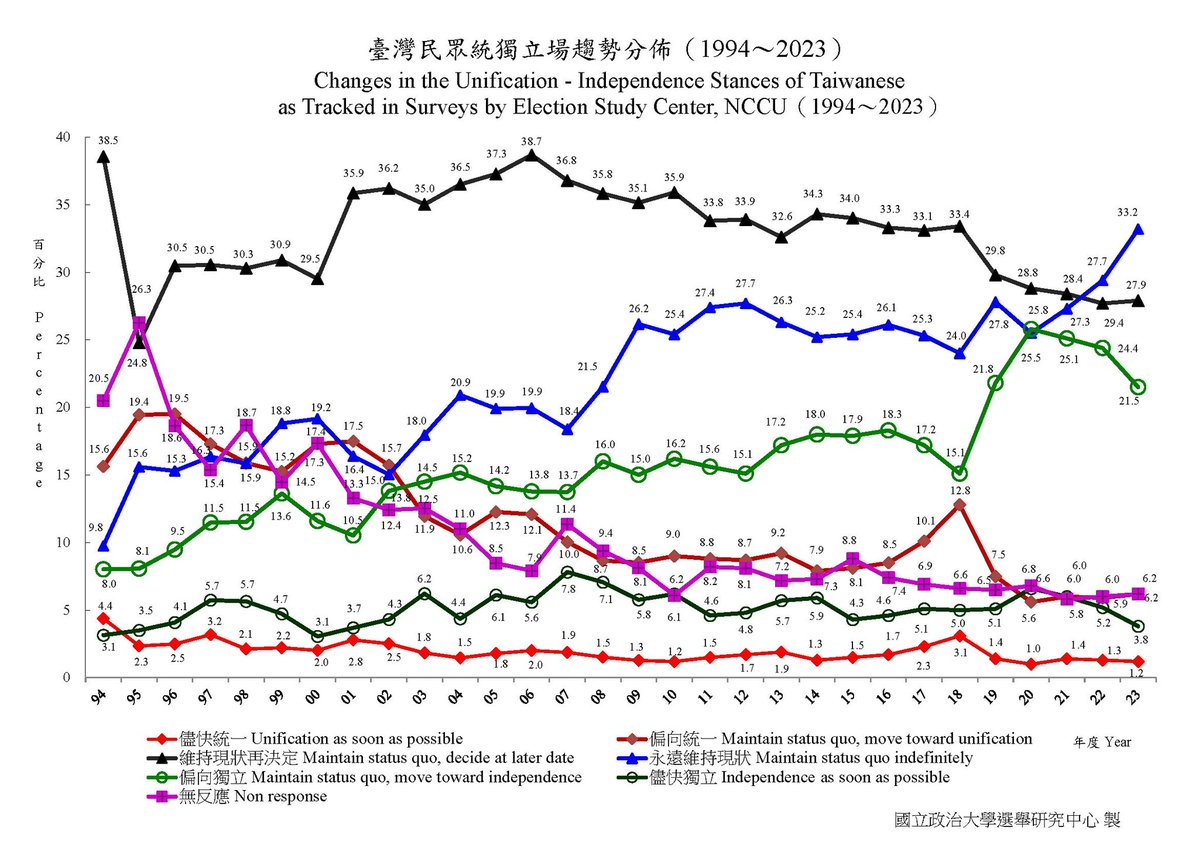- cross-posted to:
- china
- cross-posted to:
- china
The desire for Taiwanese independence has experienced a significant drop over the past three years, with only 25.3% of people who want to “move toward independence” or seeking “independence as soon as possible” - down from nearly one-third - 32.4% - in 2020.
The ongoing conflict in Ukraine has almost certainly contributed to this shift in public opinion, as people begin to understand the potential consequences of being a pawn in geopolitical power struggles.

does anyone know why there was a peak for unification in 2018
Good question, not sure what happened then.
Maybe Typhoon Mangkhut had something to do with it? Otherwise, I’m stumped.
I don’t know either, but it going down is probably related to the Hong Kong protests, and maybe the start of the Uyghur genocide claims.
Yeah, that’s around when the U.S. line on China shifted from normalization into Cold War 2.0.
It’s dumb, but consider how China was portrayed in The Martian (2015) and The Meg (2018): just another modern-ish country that we might not be best buddies with, but not one full of casually negative tropes, either. Virtually the same treatment South Korea got in Black Panther.
I don’t think you’d see the same treatment today. It’ll be interesting to see how the U.S. adaptations of The Three-Body Problem portray China.
that’s around when the U.S. line on China shifted from normalization into Cold War 2.0.
I’m surprised we’re low on alternative ideas lol. I’m just as curious what caused the peak as I am to what caused the drop. Maybe Cold War 2.0 mode was a reaction to the peak?
It’ll be interesting to see how the U.S. adaptations of The Three-Body Problem portray China.
I enjoyed Three-Body (2023), best case scenario would be Netflix make a faster paced version, worst (and most likely) scenario is you get a wacky caricature, like Wang Miao is a highschooler who has to defeat both the anti-Christ and overthrow the PRC before prom or w/e.
A peak doesn’t necessarily mean a singular event, it can be formed very easily by there being a positive vector over time, with a negative vector being introduced partway through that outweighs it, resulting in a positive net-influence followed by a negative net-influence. You usually get the most useful information from these sorts of graphs by looking at the slopes, imo.





